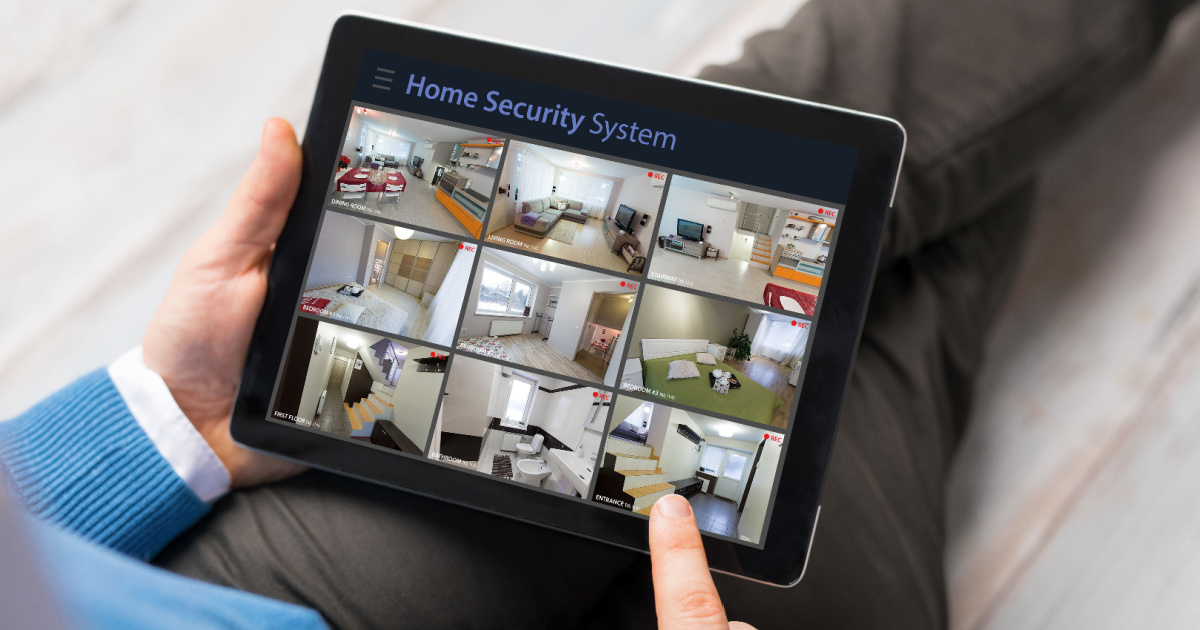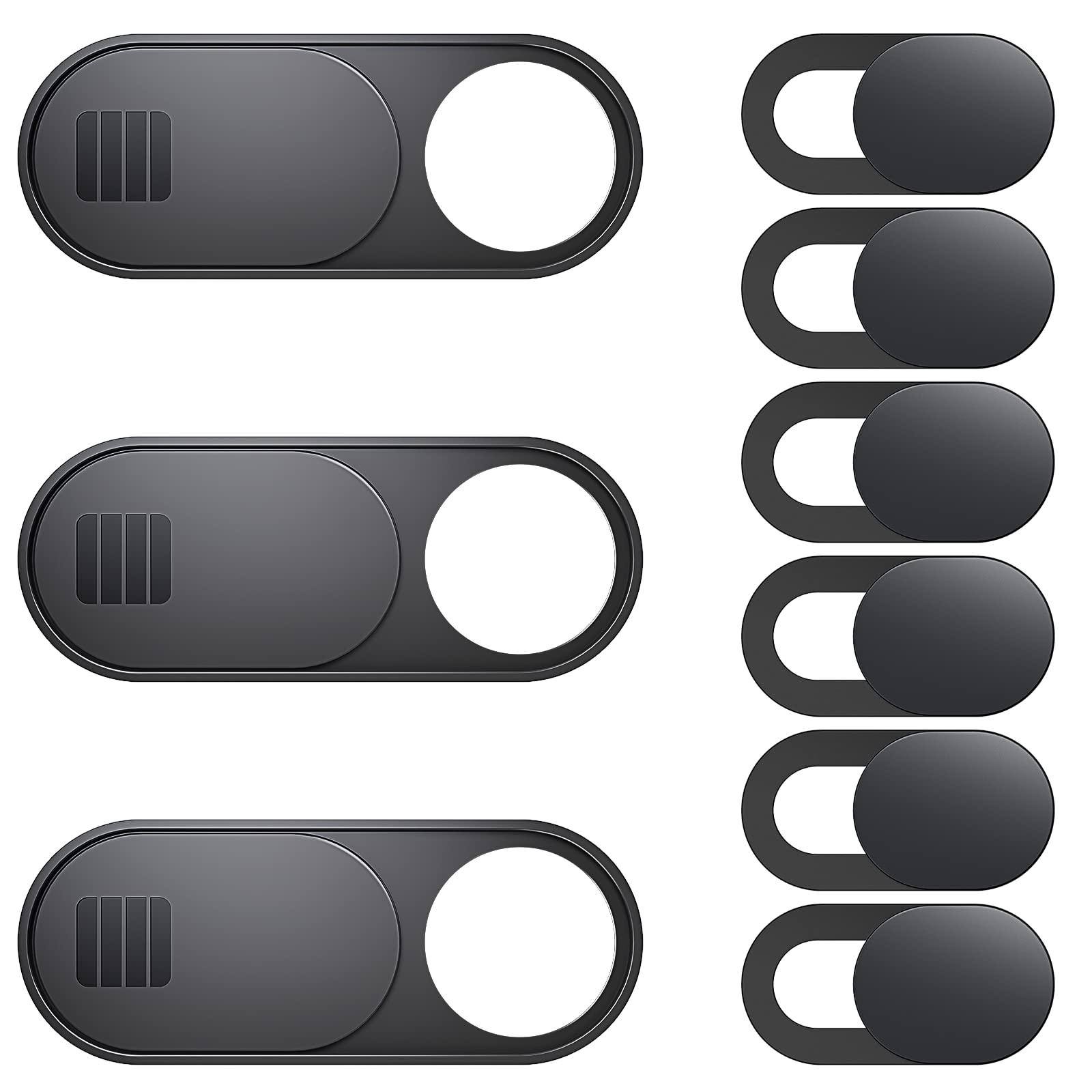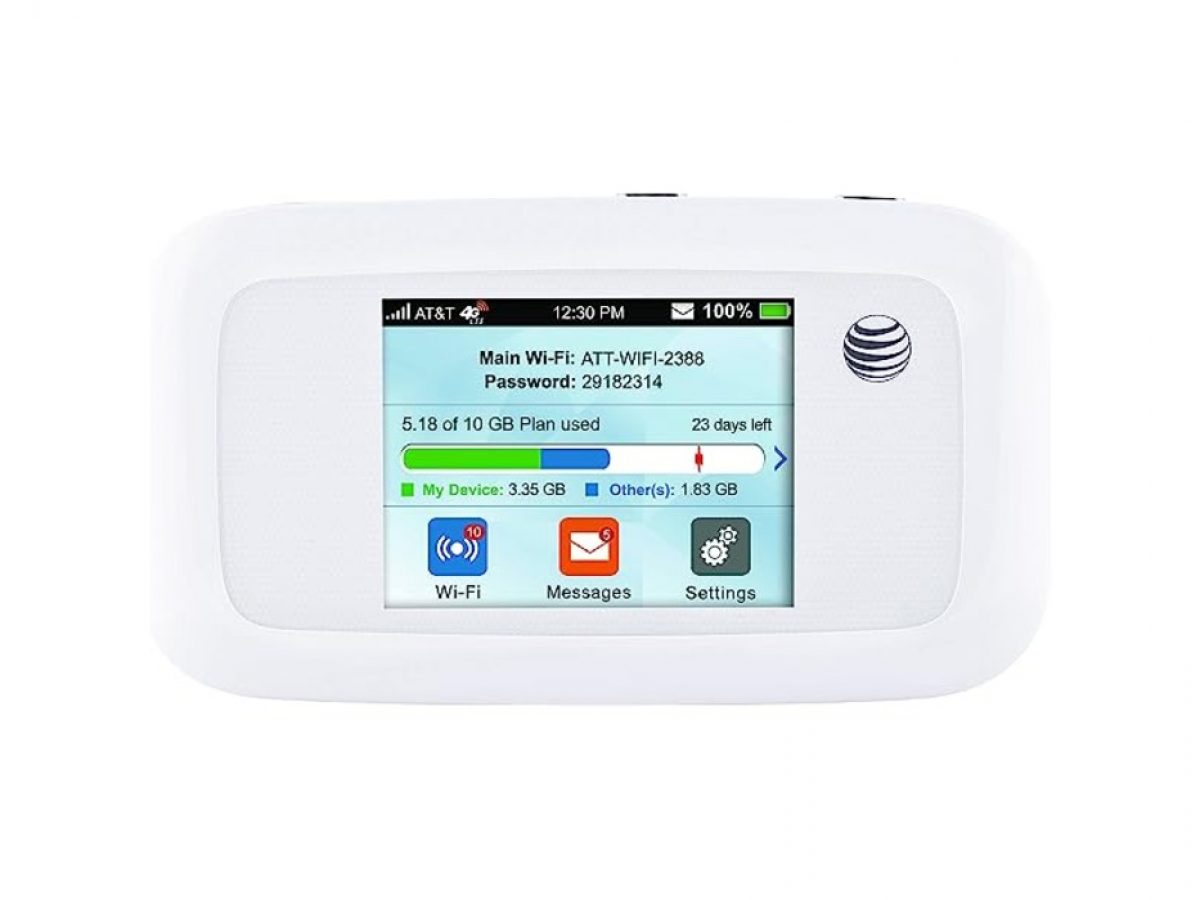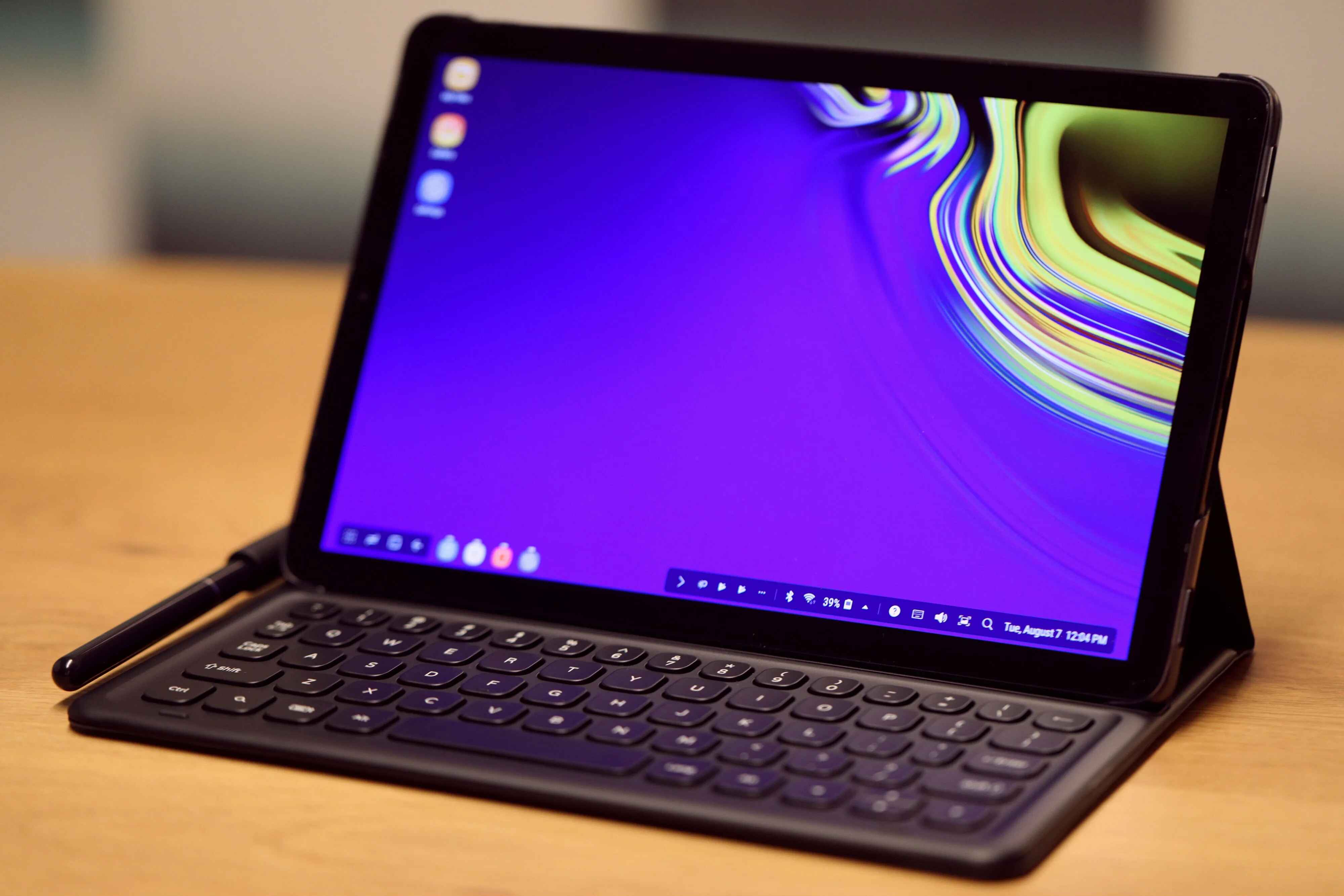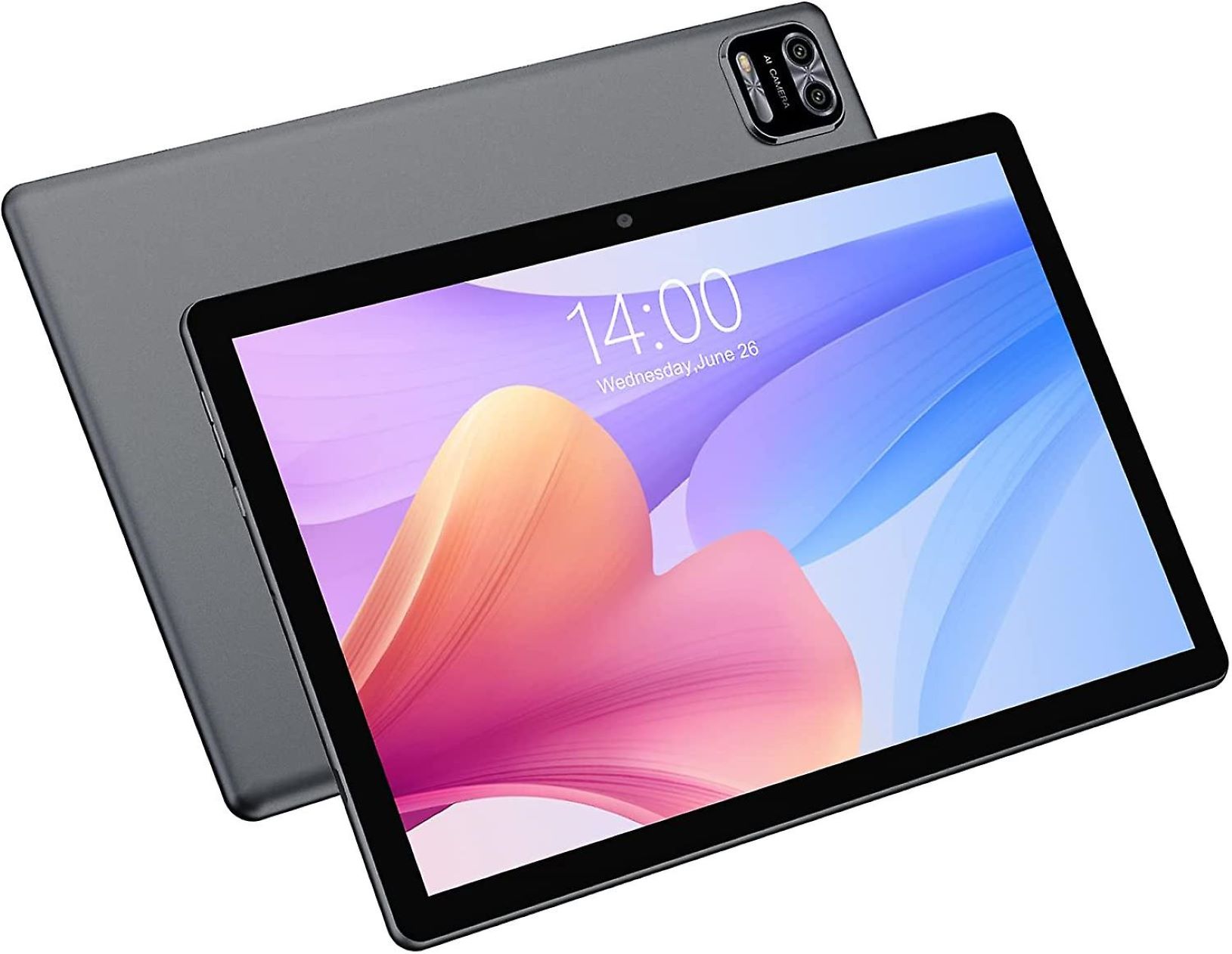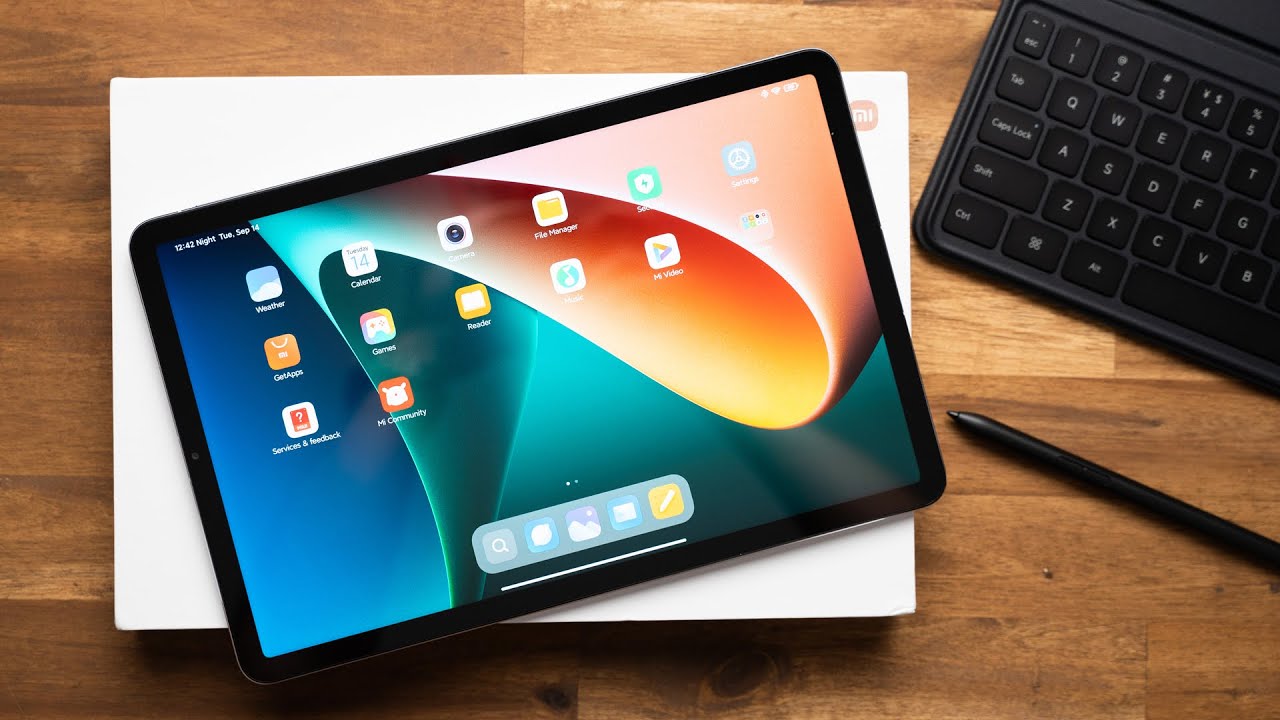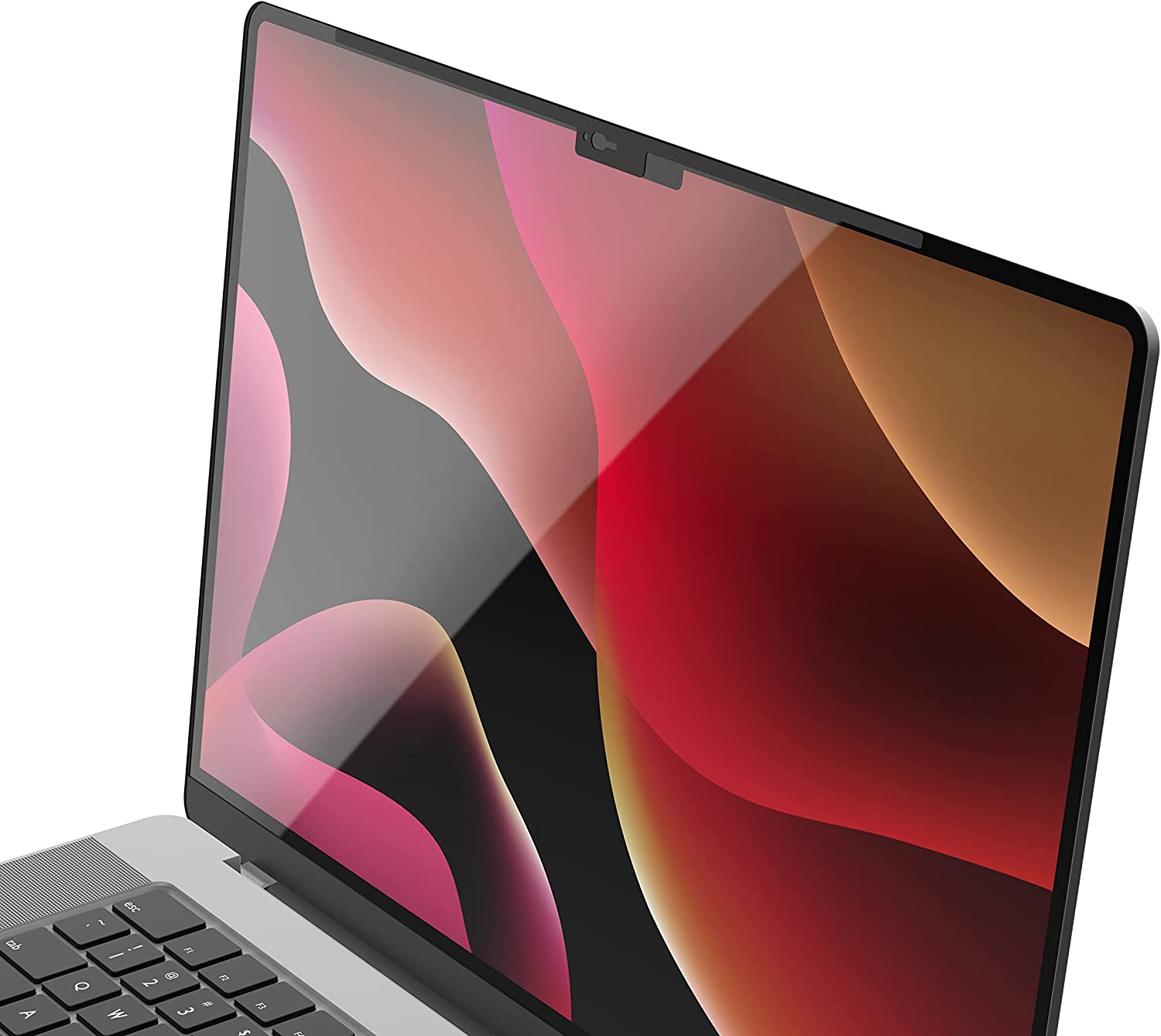Introduction
As technology advances, so do the ways in which we can utilize our devices for various purposes. One innovative application for smartphones and tablets is using them as security cameras. By repurposing your phone or tablet, you can easily set up a cost-effective home security system in no time.
In this article, we will explore how you can transform your phone into a functional security camera and take advantage of the features it offers. Whether you want to monitor your home while you’re away, keep an eye on your pets, or ensure your elderly loved ones are safe and sound, using a phone as a security camera is a convenient and efficient solution.
We will provide you with a step-by-step guide on how to set up your phone as a security camera, including choosing the right app, adjusting the camera angle, and accessing live feeds. Additionally, we will discuss the essential features to look for in a security app and share tips on maximizing the effectiveness of your makeshift security camera.
Overall, using a phone as a security camera not only offers you peace of mind but also eliminates the need to invest in expensive surveillance systems. Let’s dive into the details of how you can turn your phone or tablet into a powerful security tool and enhance the security of your surroundings.
Using a Phone as a Security Camera: An Overview
In today’s digital age, our smartphones and tablets have become essential tools in our daily lives. However, when these devices are no longer in use or are replaced by newer models, they often end up collecting dust in a drawer. But what if we told you that you can repurpose your old phone or tablet and turn it into a reliable security camera?
The concept of using a phone as a security camera is simple yet powerful. By utilizing the camera and internet capabilities of your device, you can easily monitor any area in your home or office remotely. Whether you want to keep an eye on your front door, check in on your baby while they sleep, or even watch over your pet while you’re at work, turning your phone into a security camera offers a convenient and cost-effective solution.
The flexibility and convenience of using a phone as a security camera are unmatched. Unlike traditional security systems, which require professional installation and expensive equipment, all you need is your mobile device and the right security app. Additionally, by using your phone as a security camera, you have the flexibility to position it wherever you need it most, without being constrained by the limitations of wired setups.
Furthermore, many security apps provide additional features such as motion detection, activity alerts, and two-way audio communication, allowing you to not only monitor but also interact with your surroundings remotely. This offers an added layer of security and peace of mind, as you can immediately respond to any potential security incidents.
Overall, using a phone as a security camera is a practical and accessible solution for enhancing your home or office security. In the following sections, we will guide you through the process of setting up your phone as a security camera, from choosing the right app to adjusting the camera angle. We will also discuss essential features to look for in a security app and provide tips to optimize the effectiveness of your makeshift security camera. So, let’s dive in and explore the step-by-step process of transforming your phone into a powerful security tool.
Step-by-Step Guide: Turning Your Phone into a Security Camera
Transforming your phone into a security camera may seem like a daunting task, but fear not – it’s actually quite straightforward. Follow this step-by-step guide to set up your phone as a reliable and effective security camera:
- Choose the Right Security App: Start by selecting a suitable security app from the wide range of options available in app stores. Look for apps that offer features like motion detection, cloud storage, and remote access. Popular choices include Alfred, Manything, and AtHome Camera.
- Download and Install the App: Once you have chosen an app, download and install it on both your phone (which will function as the camera) and the device you will use to monitor the camera feed (such as your current smartphone or tablet).
- Create an Account: Open the app on both devices and create an account. This is necessary to sync the camera feed and access it remotely.
- Configure Camera Settings: Set up your camera by adjusting settings like video quality, motion sensitivity, and recording preferences. Experiment with these settings to find the optimal configuration for your needs.
- Position Your Camera: Choose the location where you want to monitor and place your phone in a secure position. Ensure that the camera covers the desired area and has a clear view. You can use accessories like tripods or mounts for better stability and flexibility.
- Connect to Wi-Fi: Connect both your camera phone and monitoring device to a stable Wi-Fi network. This will ensure a reliable connection and smooth streaming of the camera feed.
- Access the Camera Feed: On your monitoring device, open the security app and log in to your account. You should be able to access the live camera feed from your camera phone now.
- Customize and Optimize: Explore the app’s settings and customize features like motion detection notifications, recording options, and remote access. Test the system to ensure that it functions smoothly and meets your security needs.
Following these step-by-step instructions will allow you to successfully transform your phone into a functional security camera. Keep in mind that the exact steps may vary slightly depending on the app you choose, so refer to the app’s documentation or support resources for specific instructions. Now that you have set up your makeshift security camera, let’s delve into the essential features to look for when selecting a security app for your phone.
Choosing the Right Security App for Your Phone
When it comes to using your phone as a security camera, selecting the right security app is crucial. With a wide variety of options available, it’s essential to choose an app that suits your specific needs and offers the features you require. Here are some key factors to consider when selecting a security app:
- Compatibility: Ensure that the app is compatible with your phone’s operating system. Most security apps are available for both iOS and Android devices, but it’s always wise to check for compatibility before proceeding.
- App Reviews and Ratings: Take the time to read user reviews and ratings for the app you are considering. This will provide insights into the overall user experience, reliability, and performance of the app.
- Features: Consider the specific features you require from a security app. For example, if you want motion detection capabilities, make sure the app offers this feature. Other features to look for may include cloud storage, remote access, two-way audio, and compatibility with external cameras.
- User-Friendly Interface: A good security app should have an intuitive and user-friendly interface that makes it easy to navigate and access various settings and features. Look for apps with a sleek design and a straightforward setup process.
- Price and Subscription Plans: Evaluate the pricing structure of the app, including any subscription plans or additional costs. Some apps offer free basic features but may require a subscription for advanced functionalities or additional storage space.
- Customer Support: Check if the app offers reliable customer support in case you encounter any issues or need assistance. Look for apps with accessible customer support channels such as email, live chat, or comprehensive online support resources.
- Privacy and Security: Ensure that the app takes your privacy and security seriously by using encryption methods and providing options to secure your camera feed with passwords or PIN codes.
By considering these factors, you can narrow down your options and find a security app that meets your requirements. Take the time to research and compare different apps before making a final decision.
Remember, the chosen security app will directly impact the functionality and performance of your makeshift security camera. So, invest some time in finding the right app that balances ease of use, features, and reliability. Once you have chosen a security app, it’s time to set up and optimize your camera. In the next section, we will delve into the essential features you should look for in a security app.
Essential Features to Look for in a Security App
As you choose a security app to transform your phone into a security camera, it’s important to consider the essential features that will enhance the effectiveness of your surveillance system. Here are some key features to look for when selecting a security app:
- Motion Detection: An app with motion detection capabilities can alert you whenever movement is detected in the camera’s field of view. This feature is particularly useful for home security, as it can notify you of any potential intruders or suspicious activity.
- Cloud Storage: Look for an app that offers cloud storage to securely save recorded footage. This ensures that even if your phone is lost, stolen, or damaged, you can still access and review the footage from the cloud.
- Remote Access: A security app with remote access functionality allows you to monitor and control the camera feed from anywhere using your smartphone or tablet. This is especially beneficial when you’re away from home and want to check in on things remotely.
- Two-Way Audio: Some security apps enable two-way audio communication, which lets you hear what is happening in the monitored area and also speak through the app to communicate with individuals on the other end.
- Scheduling: Look for an app that offers scheduling options, allowing you to set specific times for recording or activating motion detection. This helps conserve storage space and ensures that the camera is active when you need it most.
- External Camera Compatibility: If you plan to use an external camera in addition to your phone’s built-in camera, ensure that the app supports compatibility with external devices. This can give you greater flexibility in terms of camera placement and coverage.
- Compatibility with Multiple Devices: Consider an app that allows you to access the camera feed from multiple devices simultaneously. This is useful when you want to share the monitoring responsibilities with family members or security personnel.
- User-Friendly Interface: Opt for an app with an intuitive and easy-to-use interface. A clutter-free design, clear icons, and straightforward navigation will make it more convenient for you to access and control the camera feed.
- Customization Options: Look for an app that offers customization options, such as adjusting motion detection sensitivity, setting up activity zones, and defining recording preferences. This enables you to tailor the app to suit your specific security needs.
By considering these essential features, you can ensure that the security app you choose provides the necessary functionality for your surveillance needs. Take the time to compare different apps and read user reviews to evaluate the performance and reliability of each option.
Once you have selected the right security app and set up your camera, the next step is positioning the camera angle and ensuring its optimal placement. In the following section, we will discuss the factors to consider when setting up your improvised security camera to maximize its effectiveness.
Setting Up the Camera Angle and Position
When it comes to using your phone as a security camera, the positioning and angle of the camera are crucial for capturing the desired area and maximizing effectiveness. Here are some factors to consider when setting up your improvised security camera:
- Identify the Target Area: Determine the specific area or areas you want to monitor. This could be your front door, backyard, or any other location that requires surveillance.
- Ensure Clear Line of Sight: Position the camera in a way that provides a clear line of sight of the target area. Avoid obstructions like walls, furniture, or plants that may obstruct the camera’s view.
- Consider Lighting Conditions: Take into account the lighting conditions of the area you want to monitor. If it’s an outdoor location, ensure that the camera is not positioned directly facing the sun to prevent glare. Adjust the camera angle to capture the area with sufficient lighting.
- Optimal Height and Angle: The height and angle of the camera are critical for capturing clear images and videos. Position the camera at a height and angle that provides a balanced view of the desired area. This may require experimentation and adjusting the camera placement accordingly.
- Stability and Protection: Ensure that the camera is stable and securely positioned. Consider using mounts or tripods to offer better stability and flexibility in adjusting the camera angle. Additionally, protect the camera from the elements if it’s placed outdoors, using weatherproof enclosures or covers.
- Test the Field of View: Before finalizing the camera position, test the field of view by remotely accessing the camera feed and monitoring the area. Make necessary adjustments, such as tilting, panning, or zooming, to optimize the view.
By carefully considering these factors and setting up your camera in an optimal position, you can ensure that the desired area is effectively monitored. Remember to test the camera position and adjust as needed to achieve the desired results.
Once your improvised security camera is set up, the next section will provide additional tips for maximizing its effectiveness and enhancing your overall security system.
Additional Tips for Maximizing Security Camera Effectiveness
Using your phone as a security camera can significantly enhance your security system. To maximize its effectiveness and ensure the best possible results, consider implementing the following tips:
- Regularly Check Camera and App Performance: Monitor the camera and app performance regularly to ensure they are functioning properly. Make sure the camera is capturing clear images, the app is sending notifications, and remote access is working smoothly.
- Secure Your Camera Feed: Protect your camera feed by setting up strong and unique passwords or PIN codes. This prevents unauthorized access and ensures the privacy of your surveillance system.
- Keep Devices Charged: If you’re using an old phone or tablet as a security camera, make sure it is charged and connected to a power source to ensure uninterrupted operation. Alternatively, invest in a portable power bank for extended use.
- Adjust Motion Detection Sensitivity: Fine-tune the motion detection settings to avoid false alarms due to changes in lighting conditions or small movements like tree branches swaying. Adjust the sensitivity to best suit the specific area you are monitoring.
- Set Up Activity Zones: Many security apps offer the option to define specific activity zones within the camera’s field of view. Use this feature to focus on specific areas of interest and reduce unnecessary notifications.
- Regularly Back Up Footage: If your app offers local storage or allows you to download recorded footage, make it a habit to regularly back up important clips or incidents. This ensures that you have a copy of crucial footage in case of a device malfunction or loss.
- Enable Notifications and Alerts: Take advantage of the notification and alert settings in your security app. Set up alerts for motion detection or specific events to be promptly notified of any potential security concerns.
- Inform Others About the Surveillance: Notify family members, roommates, or anyone else living in the monitored area about the presence of the security camera. This encourages accountability and ensures everyone is aware of the added security measures.
- Regularly Update the App: Keep your security app up to date by installing the latest updates and patches. App updates often include bug fixes, performance improvements, and new features that can enhance the overall functionality of your security system.
By implementing these additional tips, you can maximize the effectiveness of your makeshift security camera and ensure a reliable and efficient surveillance system. Remember to stay vigilant and proactive in maintaining and optimizing your security setup.
Now that your security camera is fully functional, the next section will cover how you can monitor the camera feed and access the footage through your phone or other devices.
Monitoring and Accessing Camera Live Feed
One of the significant advantages of using your phone as a security camera is the ability to monitor the camera’s live feed remotely. With the right security app installed, you can easily access and view the camera feed using your phone or other devices. Here’s how:
- Open the Security App: Launch the security app on your monitoring device, such as your current smartphone or tablet.
- Log In to Your Account: Sign in to your account using the credentials you created during the initial setup.
- Locate Your Camera: In the app’s interface, find and select your camera from the list of devices associated with your account.
- Access the Live Feed: Once you’ve selected your camera, you should be able to access the live feed directly on your device’s screen. You may be prompted to allow camera and microphone access if it’s your first time accessing the feed.
- Control Camera Functions: Some security apps offer additional functionalities, such as the ability to pan or tilt the camera or adjust zoom settings. Explore the app’s interface to access these features if available.
- Switch Between Cameras: If you have multiple cameras set up, check if your app allows you to switch between different camera feeds. This is particularly useful if you want to monitor different areas or angles simultaneously.
- Ensure a Stable Internet Connection: To maintain a smooth and uninterrupted live feed, make sure your monitoring device is connected to a stable internet connection, preferably Wi-Fi. This ensures that you receive real-time updates and alerts.
By following these steps, you can easily monitor the live feed of your improvised security camera using your phone or other devices, providing you with peace of mind and real-time surveillance. It’s important to note that the exact process may vary slightly depending on the security app you are using, so refer to the app’s documentation or support resources for specific instructions.
Now that you know how to access the live feed, the next section will cover how you can save and share security camera footage captured by your phone.
Saving and Sharing Security Camera Footage
Recording and saving security camera footage is an essential aspect of using your phone as a security camera. Not only does it allow you to review past events and incidents, but it also provides valuable evidence if needed. Additionally, you may want to share footage with others for various purposes. Here’s how you can save and share security camera footage:
- Saving Footage Locally: Check if your security app offers the option to save recorded footage directly to your device’s local storage. This allows you to access the footage offline and ensures that it remains within your control.
- Cloud Storage: Many security apps provide cloud storage options for saving recorded footage. This offers the advantage of securely storing your footage in a remote server, safeguarding it from loss or damage to your device.
- Downloading and Exporting Footage: If your security app allows it, you can download and export specific footage clips to your device’s storage. This is useful for archiving important incidents or sharing the footage with law enforcement, insurance providers, or other relevant parties.
- Sharing Access: Some security apps provide the option to share access to the camera feed and recorded footage with others. This can be useful if you want to grant access to family members, friends, or security personnel.
- Reviewing Footage: Take the time to regularly review the recorded footage to identify any unusual or suspicious activities. This allows you to take appropriate action and improve the overall security of your premises.
- Setting up Motion Alerts: Configure your security app to send motion alerts and notifications whenever movement is detected. This ensures that you are immediately notified of potential security incidents and allows you to review the corresponding footage promptly.
- Keep Your Storage Capacity in Check: Depending on the storage options provided by your security app, ensure that you have sufficient space to save the recorded footage. Regularly delete old or irrelevant footage to make room for new recordings.
By following these practices, you can save and manage security camera footage effectively. The availability of these features may vary depending on the security app you are using, so refer to the app’s documentation or support resources for guidance on how to save and share footage.
Remember to adhere to legal requirements and regulations regarding the storage and sharing of security camera footage in your jurisdiction. It’s essential to respect privacy laws and ensure that the footage is used responsibly and within the confines of the law.
With these steps covered, you now have a comprehensive understanding of how to save, access, and share security camera footage using your smartphone. In the concluding section, we’ll summarize the key points discussed in this article.
Conclusion
Transforming your phone into a security camera offers a convenient and cost-effective way to enhance your home or office security. By repurposing your old device and installing the right security app, you can easily set up a reliable surveillance system with features like motion detection, remote access, and cloud storage.
In this article, we explored the step-by-step process of turning your phone into a security camera. We discussed the importance of choosing the right security app and highlighted essential features to look for, such as motion detection, cloud storage, and remote access. We also provided tips on positioning the camera angle, optimizing its placement, and monitoring the live camera feed remotely from your phone or other devices.
Additionally, we covered the vital aspect of saving and sharing security camera footage. Whether through local storage or cloud storage options, saving and exporting footage allows for future reference, evidence collection, and sharing with relevant parties.
By implementing best practices such as regularly checking camera and app performance, securing camera feeds, and adjusting settings like motion sensitivity and activity zones, you can maximize the effectiveness of your improvised security camera system.
While using your phone as a security camera offers numerous benefits, it’s important to remember to respect privacy laws and adhere to legal requirements in your jurisdiction. Be proactive in maintaining and optimizing your security setup to ensure a reliable and efficient surveillance system.
Now that you have a comprehensive understanding of how to turn your phone into a security camera and utilize its features for enhanced security, you’re ready to take action. Enjoy the peace of mind that comes with having a cost-effective and accessible surveillance system at your fingertips.







